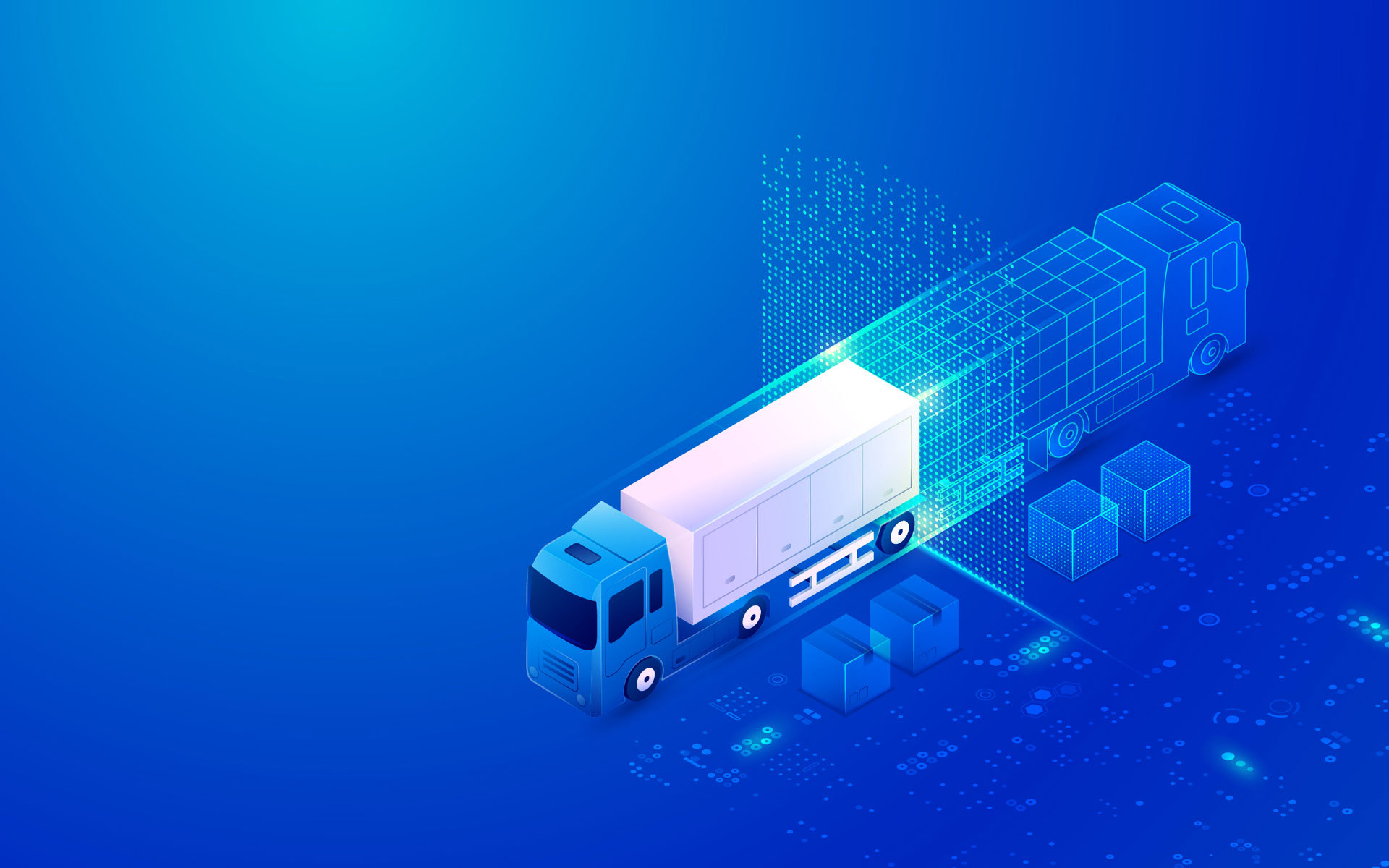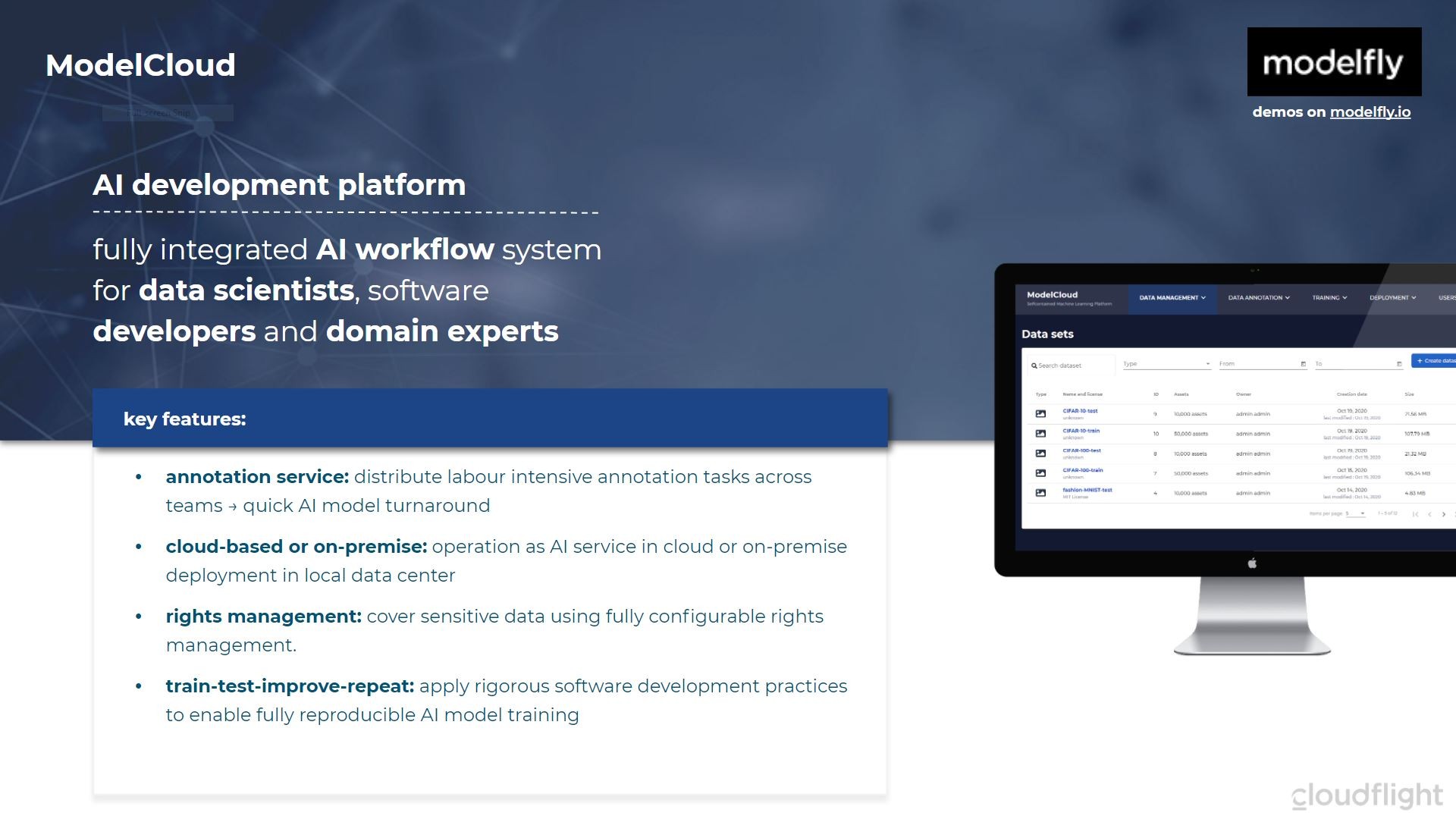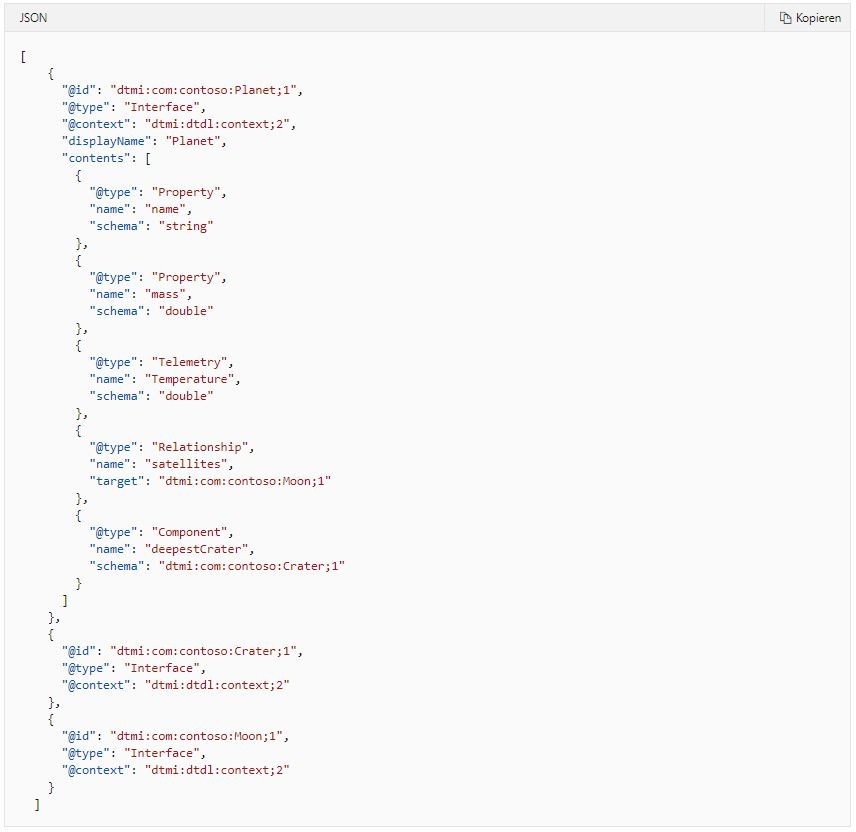From a simple coexistence to an intelligent supply chain ecosystem
With the help of Digital twins in connection with Artificial Intelligence, an intelligent model for the entire supply chain network in logistics could emerge. In my new article, I would like to describe the possible applications for digital twins in logistics and why digital twins have the potential of unlocking advanced possibilities of AI.
Digital twins are finding their way into increasingly more industries and developing their full potential in conjunction with Artificial Intelligence (AI). However, they have not yet been widely used in the logistics industry – even though many of the most important basic technologies are already available. For example, sensors are being used to track shipments, and the logistics sector is increasingly relying on open API strategies and migration to the cloud. Logistics companies are applying machine learning and advanced analytics techniques in order to optimise their supply chains and gain new insights from historical shipping and operational data. Logistics experts are also implementing augmented, mixed, and virtual reality applications for tasks such as warehouse picking and vehicle loading. Altogether, this is an ideal data basis for creating digital twins in the logistics sector. But what concrete application possibilities do digital twins offer in the logistics sector?
Digital twins for packaging and containers
Most products that are transported through logistics networks are in some form of packaging. The industry uses large quantities of single-use packaging along with fleets of dedicated or universal reusable containers. The development, monitoring, and management of packaging and containers poses a number of challenges for the logistics sector. On one hand, an increasing (and not only since COVID-19) demand for packaging and containers can be observed because of the continued growth in e-commerce. On the other hand, there is seasonal volatility and a high overall variety of packaging. This leads to significant waste and reduces operational efficiency as a result of poor volume utilisation.
By using material digital twins in conjunction with computer vision technologies, detailed models of containers could be quickly created, and potential problems such as dents and cracks could be automatically detected. This information could be combined with historical data about the container’s movements in order to create a digital twin that would influence decisions about when a particular container should be used, repaired, or retired. In addition, aggregating such data across an entire fleet of containers could help owners make optimal decisions about the size and distribution of the fleet and identify trends that could indicate underlying problems such as a fault in the container. Digital twins could also be used in the development of stronger, lighter, and more environmentally friendly packaging materials and help manage container fleets more efficiently.
Digital twins of shipments
Including the contents of a container in its digital twin is the next logical step. It is already common practice to ship sensitive, high-value products such as pharmaceuticals or electronic components with sensors that monitor parameters such as temperature, shock, and vibration. A digital twin of a shipment would function as a kind of “repository” for the data collected by these sensors and would make it possible to use this data in a new way. For example, a model that includes the thermal insulation and shock-absorbing properties of the packaging could allow the conditions inside a container to be extrapolated from data collected by external sensors.
Combining product and packaging data could help companies improve efficiency by optimising the automation of packaging selection and container packing strategies in order to minimise empty space and contamination of the shipment.
Digital twins of warehouse and dispatch centres
Another exciting field of application for digital twins arises in the design, operation, and optimisation of warehouse and dispatch centres. Warehouse digital twins can support the design and layout of new facilities by combining a 3D model of the facility with IoT data as well as inventory and operational data (e. g. size, quantity, and demand characteristics of items) in order to optimise space utilisation by simulating the movement of products, personnel, and materials. Digital twins can also be updated during warehouse operations with data from automation technologies such as drone-based inventory counting systems, driverless transport systems, and even automatic storage and retrieval devices. These digital twins can then be used to further optimise the performance of these automation systems.
In sum, digital twins can be used to continuously improve performance in warehouses and dispatch centres by identifying comprehensive data – from the movement of inventory, equipment, and personnel to the identification and elimination of waste in warehouse operations (e.g. picking errors). Before changes are made in live operation, simulation can be used to test and evaluate the potential effects of changing the layout and process or introducing new equipment. Especially in areas where rapid changes in volume and inventory mix are to be expected (e.g. in e-commerce fulfilment), digital twins can provide support by dynamically optimising processes – from storage locations and staffing to the allocation of equipment.
Digital twins and Artificial Intelligence
The real boom for digital twins comes from AI and its predictive capabilities. In the past, creating spatial models digitally was exciting – but little more than a way of visualising an object statically. Today, all the data we have from sensors, historical performance, and inputs on behaviour can be linked to the spatial model and predict future behaviour by changing different inputs. In fact, the data and the predictive capabilities bring the spatial model to life.
The first advantage of a digital twin is the ability to generate simulated data. A virtual environment can be subjected to an infinite number of repetitions and scenarios. The simulated data generated can then be used to train the AI model (e.g. as part of an AI development platform). In this way, the AI system can be taught potential real-world conditions that might otherwise be rare or still in the testing phase.
Finally, the addition of machine learning to an industrial process will make the process smarter by obtaining more accurate data and predictions as well as understanding visual and unstructured data. Integrating machine learning into the work flow not only opens up opportunities to discover previously unseen patterns in the data but also creates new possibilities for optimising processes.
Digital twins unlock advanced possibilities of AI
Most machine learning today is supervised learning; the model learns from labelled examples. There are also other forms of learning that make it possible to find unforeseen patterns in the data. One of these is referred to as Reinforcement Learning, whereby the unsupervised model learns from rewards when it takes action in a given (simulated) environment.
However, in most of the widely known cases of reinforcement learning, these conditions would not be possible in the real world. Even state-of-the-art models of reinforcement learning require a lot of experience in order to become effective. To give an example: The OpenAI Five neural network required 180 years of effective playing time for training.
So far, much of modern reinforcement learning works only in games because the amount of repetition would not be possible in real life. In the digital twin environment, you can repeat a scenario or conduct a test without continually interrupting the system so that reinforcement learning agents can find new ways to get the reward. In practice, this procedure could become well established. For example, as a method for optimising logistics networks, thereby far surpassing conventional optimisation algorithms in terms of performance.
Intelligent supply chain ecosystem
Warehousing and dispatch centres make up only a fraction of the total logistics infrastructure. The flow of goods from source to destination depends on the orchestration of various elements, including ships, trucks, and planes, order and information systems, and – above all – people. This complex, multi-stakeholder environment can be analysed most clearly at major global logistics hubs such as cargo airports and container ports. In these facilities, the challenge of efficient operations is currently exacerbated by imperfect information-sharing systems in which many participants rely on off-line processes that can be error-prone.
With the help of digital twins in combination with AI, an intelligent model for the entire supply chain network and the simultaneous availability of information for all partners to increase the transparency of their supply chains could emerge. The basis for this would be the use of all internal and external data to control the supply chain as well as access to unstructured, external data (e.g. from IoT and social media applications and customer data).
Digital twins and AI will play a decisive competitive advantage in optimising logistics networks in the future. We would be happy to show you which concrete application scenarios are also possible in your company in a personal Cloudflight Get Inspired Event.Sources: Digital twins in logistics – A DHL perspective on the impact of digital twins on the logistics industry, research, personal experience


